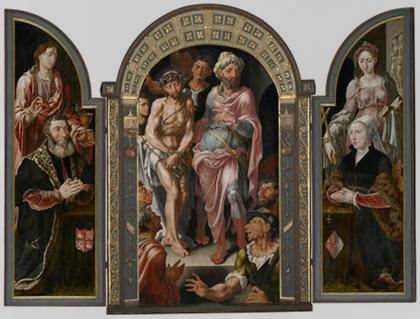
HENRY MOORE
Large Two Forms, 1966
Bronze
141 11/16 x 240 3/16 x 171 5/16 inches (360 x 610 x 435 cm)
Ed. of 4
Installation at Perry Green, Hertfordshire, United Kingdom
Reproduced by permission of The Henry Moore Foundation
Henry Moore: Late Large Forms – Gagosian Gallery Gagosian Gallery, in collaboration with The Henry Moore Foundation, presents a major exhibition of large-scale sculptures by Henry Moore, some of which are being presented indoors for the first time. 31 May – 18 August, 2012]]>
Source: Gagosian Gallery
Moore’s oeuvre, emblematic of modern British sculpture, is informed by elements of the abstract, the surreal, the primitive, and the classical. His rolling corporeal forms are as accessible and familiar as they are distinctly avant-garde. Moore’s first solo sculpture exhibition was held in London in 1928; by the late 1940s he had become one of Britain’s most celebrated artists with a diverse oeuvre that encompassed drawings, graphics, textiles, and sculpture. In the following decades he continued to receive increasingly significant sculpture commissions, following a major retrospective at the Museum of Modern Art in New York in 1946 and winning the international prize at the Venice Biennale in 1948. Moore’s large-scale sculptures have been placed in indoor and outdoor environments all over the world including Kenwood House, London; The National Gallery of Art, Washington DC; the United Nations Headquarters, New York; the Houses of Parliament, London; St Paul’s Cathedral, London; and the City Museum of Contemporary Art, Hiroshima.
Moore’s large-scale sculptures celebrated the beauty and power of organic forms at a time when traditional representation was largely eschewed by the vanguard art establishment. Their prodigious size and forceful presence have an overwhelming physicality that promotes a charged relation between sculpture, site, and viewer. In “Two Piece Reclining Figure No. 2” (1960) the rough texture of the patinated dark surface infuses the large corpus with a certain brutalism, the stunted head and blocky limbs akin to arched geological formations, weathered from time immemorial. “Large Two Forms” (1966) and “Large Spindle Piece” (1974) evidence an interest in both natural and man-made objects.
It was Moore’s intention that these large-scale forms be interacted with, viewed close-up, and even touched. In order that their heft and mass be perceived in myriad of settings, they were most commonly placed outdoors, subject to the effects of changing light, seasons, and terrain. Within the controlled white environment of the gallery space, the sheer volume and mammoth proportions of the sculptures are more keenly felt. Brimming with latent energy, their richly textured surfaces and sensual, rippling arcs and concavities can be seen to new effect.
Related content
Henry Moore retrospective in Barcelona (exhibition, 2006)
Follow us on:


